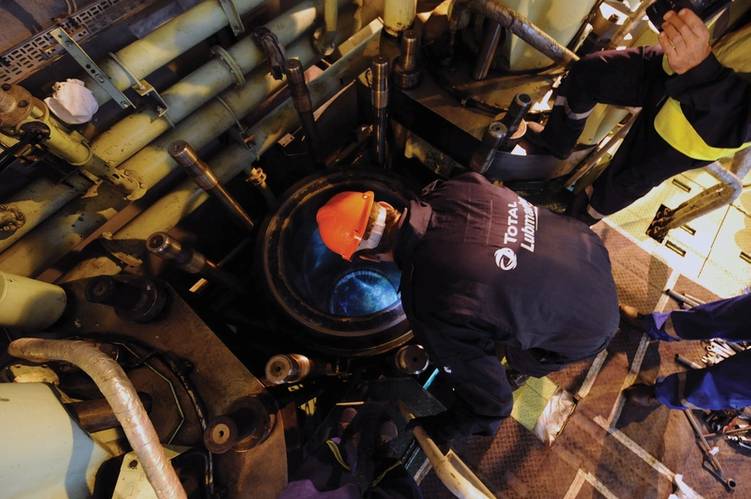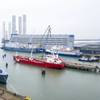IMO 2020: More than Fuel Choice
With a year to go before the implementation of the 2020 Sulfur Cap, few topics will be higher on the list of priorities for shipowners than complying with Annex VI of the IMO MARPOL Convention (2008). However, the reduction of sulfur content in marine fuel from 3.5% to 0.5% in time for the deadline means more than identifying a strategically suitable fuel choice. The importance of choosing the correct lubricant, coupled with incorporating the relevant supporting is also a vital consideration.
As both a global lubricant supplier and as a part of the wider Total Group, Total Lubmarine supports the implementation of the 2020 Sulfur Cap. We are committed to providing sustainable alternatives and we strongly believe that the new IMO regulations will be the driver for further technological evolution.
At the same time, we are committed to our customers and we are acutely aware of the operational challenges shipowners face. The lubrication of engines requires numerous and flexible solutions. We are committed to ensuring that there is industry understanding that developing lubricants, which are suitable post 2020, is more complex than simply tweaking existing products.
These challenges range from dealing with variable fuel quality and combustion to identifying optimum Base Number (BN) levels.
With a little under 12 months until the 2020 Sulfur Cap comes into force, we are beginning to see more shipowners making their choices, but there is still no clear consensus over the best strategy to comply with the upcoming regulation. For many newbuilding projects, scrubbers are being fitted or LNG or dual-fueled engines are a viable option. However, for much of the existing fleet, the Low Sulfur Fuel Oil (LSFO) option is a likely path.
As a result, we are currently developing a new solution to increase the versatility of our product range. It is our belief, that low ash chemistry will be the basis for the next generation of engine oils, particularly for dual-fuel engines or those diesel engines fitted with selective catalytic reduction systems. In addition to this, we are also developing new fuel lubricants designed to reduce CO2 emissions.
While we believe that there will be a convergence on LSFO, the reality is that a multi-fuel era is on the horizon. With this new era comes the possible issue of poor compliant fuel quality. To a lubricant supplier, questions around quality lead to concerns about poor combustion and ultimately engine condition and efficiency. Simply changing BN levels may not be enough to avoid engine-fouling, liner scuffing or ring breakdown, all problems that cost shipowners huge amounts of capital in engine replacement and downtime.
Choosing LSFO will subsequently lead to lower BN products, this introduces a dynamic issue in that when BN is reduced via conventional chemistry, there is a reduction in the ability of the lubricant to keep the engine clean. Providers must ensure that they deliver a product for shipowners choosing the LSFO route that delivers low BN aligned with effective detergency properties. To achieve this, providers must have experience with modern engines and fuels, be working closely with OEMs and proactively harnessing R&D capabilities to deliver a 2020 solution that will offer a smooth transition.
An increase in regulation on fuels as well as specific regional rules regarding bunkering has created, and will continue to create, real complexities in terms of lubricant supply. Suppliers have had an increased number of products to deal with, while still looking to deliver across their networks. Bear in mind that only a decade ago there were two products for two-stroke engines, where today we have six plus products for two-strokes. At Total Lubmarine, we are proud to have kept the same number of products in the same wide range of ports despite these regulatory challenges.
The introduction of Emission Control Areas (ECAs) in Europe and North America highlight the issues that the industry is already facing – acting as a precursor for the challenges of tomorrow. The 0.1% sulfur cap regulations have been extremely difficult from an engine lubrication point of view.
For example, when a vessel leaves an ECA and switches over from a low to high sulfur fuel, the potential for the worst engine damage occurs. The low base number lubricants designed for 0.1% sulfur fuel simply do not have the basicity to protect an engine from the high levels of acidity in the higher sulfur fuels. (See Dole Case Study).
Services Supporting Solutions
A real headache for marine engineers is the business of dealing with so many grades of lubricants on vessels that only have two lubricant tanks. We have mitigated these issues through our network of engineers who are always available to help achieve practical solutions.
When accounting for the additional complexity highlighted above, the value of continuous monitoring cannot be overstated. In the case of a two-stroke engine, achieving the right levels of cylinder lubrication is dependent on combining numerous different operating parameters managed by a lubricant expert. Modern engines are particularly sensitive to corrosive wear and both under and over lubrication can result in costly and long-lasting damage. Launched in 2017, the Total Lubmarine feed rate optimization program, Drain Oil Optimize, has been a significant step forward in tackling this issue, with customers reacting positively to this added-value service.
For shipowners, finding the right solution ahead of 2020 promises to be a challenging task. However, whatever the fuel choice, the importance of picking the correct lubricant cannot be undervalued. We believe that dynamic R&D supported by crew and onshore technical staff assistance is the best long-term strategy. New fuel and new engine technologies need new types of lubricants. With engine technology continually evolving, the need to remain agile and continue to understand and find solutions to the challenges shipowners face ahead of the upcoming IMO regulation is more important now than ever before.
Case Study: Dole & Talusia Optima
Following the introduction of the 0.1% sulfur cap imposed within ECAs off the U.S. coast in 2015, Dole realized it had a problem. The engines of two of its vessels, ‘Dole Chile’ and ‘Dole Columbia’, which had been transporting fresh fruit from South to North America for the past 15 years, were suddenly suffering from rapid cylinder wear. This wear was so severe that liners and rings would need replacement within 100 hours of operation.
The company was forced to fly in cylinder liners to keep the ships in service. Faced with problems meeting schedules and spiraling overheads, the situation was not good. It took over two years of experimentation with different lubricants and feed rates, timing adjustments and the installation of a completely new cylinder lubrication system before the situation returned to manageable levels. Despite this, liner wear rates and ring breakages were still much higher than normal. However, in the latter half of 2017, the company was informed by Total Lubmarine of its newly developed single-oil, BN 100, marine cylinder lubricant, Talusia Optima. The solution enables fuel switching when transiting both in and out of ECAs without the need to change lubricants, while also ensuring reduced wear rates and abrasive deposits.
This unique product, formulated using Ashfree Neutralizing Molecules (ANM) technology, provides fast and effective acid neutralization without the undesired mineral deposit build up. In addition, high-quality surfactants are used to provide detergency and cleanliness. Compared with other BN 100 products on the market, Talusia Optima has a better-proven resistance to wear, as well as better thermal resistance and piston coat wearing.
The Author
Serge Dal Farra has held the position of global marketing manager at Total Lubmarine since 2011, having worked in a variety of sales and marketing roles at the company, and an affiliate, since 1990. Before joining Total, Serge spent several years at sea as an engineer and deck officer. Serge is committed to industry-focused education initiatives, founding the Total Lubmarine Maritime Academy Support Program.

















